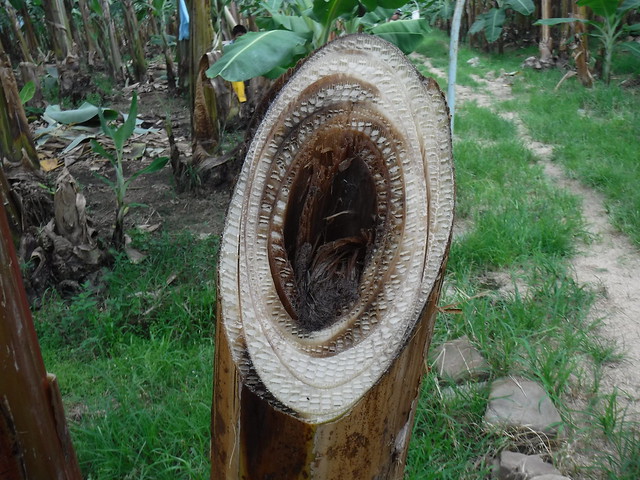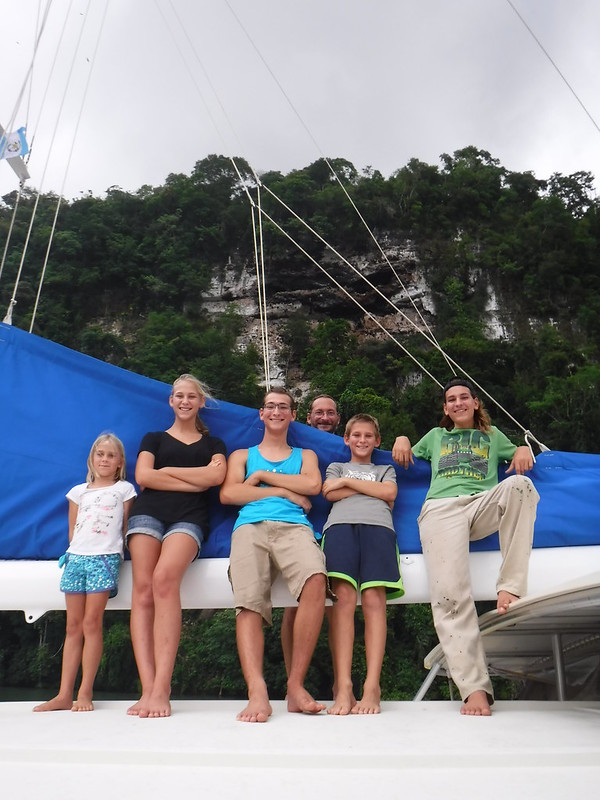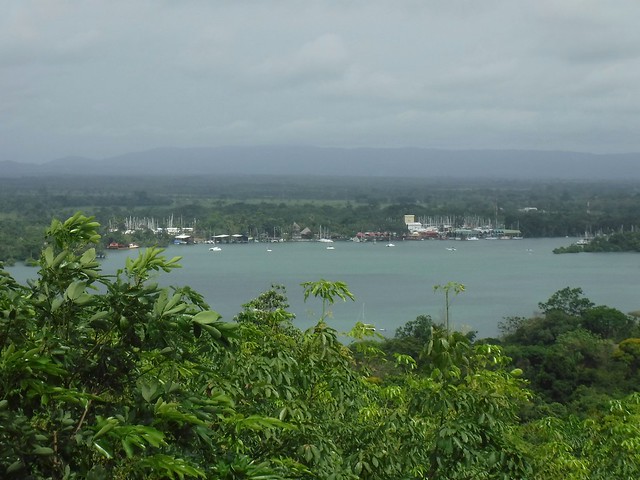We had been back in Guatemala for a few weeks after our trip to the United States when we decided the Mayan ruins nearby sounded like an interesting and educational way to pass some time while our boat was hauled out. The house on the Rio we had rented was reserved by another group for three days in the middle of our stay, so we had to find somewhere to go. Why not Tikal? And that is how I found myself climbing into another bus privado with only my backpack and a good book. For a sailing blog, I spend an awful lot of time writing about being on a bus.
We drove for several hours, at last alighting in the town of El Remate. We had rented another Airbnb house, a well-appointed affair that was part of a nearby hotel. We got our tours to Yaxhá (another ruin in the Petén region) and Tikal lined up for the next two days and were just sitting down to a relaxing lunch at the hotel restaurant when disaster struck. Dad had asked a friend to go check on his batteries while we were gone, and he discovered a serious problem. This was very bad news. Dad had to return to the Rio early the next day to work on the battery bank. The good news was that the rest of us would stay to see the ruins.
Our tour to Yaxhá was slated for the afternoon and evening. We filled the intervening time by reading about Mayan history, playing video games, and eating at a nearby restaurant. Then it was time to go. Our driver and tour guide were waiting for us at the hotel reception desk, along with a turismo van. Our guide’s name was Nathaniel, a young guy who used to play soccer (futbol) on the national team. He and Mom talked continuously during the hour-long ride to Yaxhá. The road ran through the Guatemalan countryside: fields, dwellings, roadside produce stands, cow pastures, and jungle.
The city of Yaxhá is located at the end of a loooong dirt road stretching through the hilly wilderness. At the end of the road is a pyramid. It is one of the smaller ones, only about fifty feet high. The stone was weathered, and plants were growing on its stepped sides. That looked like all there was; there was no ruined city in evidence, only thick, hilly jungle. Thick, exceptionally steep hilly, jungle. Wait a minute. Nathaniel informed us that the suspiciously steep hills were the ruins. But they were covered with trees! Our guide explained that the pyramids and temples were extremely overgrown, but there was definitely a city buried under the forest. Over 500 structures’ worth. Excavation and restoration had begun in the 1950s and was still underway. Nathaniel showed us around.
The path wound through the invisible city, skirting the buried pyramids. Howler and spider monkeys swung in the trees above. It seemed like a typical rainforest hike. Then we would come around a corner, and a cluster of stone buildings would emerge. Nathanial told us they were palaces. The ruins looked like sets from an Indiana Jones movie. The city was built near a large lake that provided transportation to the other nearby cities. There was even a temple on an island in the lake.
The Mayan empire once stretched from the Yucatán peninsula in southern Mexico to northern Honduras and El Salvador, completely encompassing Guatemala. Which is why Guatemala is home to some of the most spectacular Mayan ruins in the world (in addition to quite a large population of Mayans, who are still around despite efforts by the Spanish conquistadors to obliterate them).
Some of the buildings we were looking at dated from as early as 600 B.C., the middle of the Mayan Pre-classic period, though structures were often built in layers, pyramids becoming larger with each successive renovation. The Mayan civilization lasted from around 2000 B.C. to well into the sixteenth century, and thrived from around 750 B.C to 900 A.D. Not long after, the civilization went into decline, and collapsed in the following centuries for reasons unknown. The last vestiges of any organized civilization were systematically destroyed by the Spanish conquistadors after their arrival in the 1500s, however, there remains to this day a large number of people of Mayan descent that inhabit Guatemala, Mexico and Belize, and still carry on many of the traditions.
During their multi-millenial dominance of Mesoamerica, the Mayans developed an advanced system of writing, mathematics, and astronomy, in some areas predating and surpassing all other early civilizations. Their mathematical skill was far ahead of contemporary peoples, and their hieroglyphic writing was the most complex of any pre-Columbian civilization. Their polytheistic belief system had much in common with other Mesoamerican peoples, including complicated rituals, sacred basketball games, and human sacrifice. Despite efforts by Spanish settlers to convert the people to Catholicism and destroy the original traditions and practices, Mayans still come to worship and make offerings at sacred places. The ashes of their recent fires can be seen in front of many of the pyramids (like the altars in the main plaza at Tikal).
We wandered around Yaxhá for several hours. Most of the structures were still buried, but we could see what once had been there. The sheer number of pyramids was surprising. You would expect that constructing something so large would be an expensive, laborious, and time-consuming endeavor, but there seemed to have been no shortage of cheap labor in the ancient city, because the ponderous edifices were liberally planted throughout the area. Basically, every hill was made of cut stone blocks under all the dirt and trees. I still have trouble believing it. Many of the excavated structures had wooden stairs running up the side, put in place by the national park system so that people could ascend to the tops, and a brisk climb afforded wonderful views of the surrounding jungle, punctuated with the tops of other pyramids.
The (literal) high point of the tour was when we climbed up a temple that towered 100 feet above the city. It was late evening by then, and the sun was hidden behind a thick layer of clouds. We were joined by several other tour groups, all eagerly awaiting the imminent sunset. It was, after all, a sunset tour. We were not disappointed. The sun sank through the grey clouds, and for a few moments illuminated the jungle, sky, and stone with its ruddy brilliance. Then it slipped behind the mountains, leaving only the lava-colored clouds above to mark its passage.
We walked back to the bus in the dusky shade of the forest canopy, listening to the eerie roars of the howler monkeys in the distance. So that was Yaxhá. The Mayan ruins were cool. They were remarkably well-preserved; except for the fact that they were often still half-way inside of a hill. It was hard to believe that they were the oldest man-made things I’ve ever seen.
Tikal, which we toured early the next day, was basically more of the same, only on a grander scale. We were pretty tired from the evening hike the day before, and I had a very pleasant sleep… only to be rudely awakened at the ungodly hour of 5:30 to get ready to go to. The van had arrived by the time we were all packed up and semi-conscious. It was the same van, in fact, and our guide was Nathaniel again. I confess to sleeping on the ride to Tikal, an incredibly difficult feat considering the bumpiness of the road. Tikal is a much larger and more well-known city, much more frequented by tourists. As such, there is more tourist-related infrastructure, like a large parking lot, museum, bathrooms, and trinket-vendors. Fortunately, this was only around the visitor center. Once we started walking into the jungle, all of that disappeared.
Once the most powerful city in the Petén basin, Tikal was abandoned in the 10th century. At its height in the Late Classic period, the city was home to possibly millions of people, and its suburbs, satellite cities, and fortifications extend miles and miles into the jungle. Only a tiny fraction of Tikal’s hundreds of buildings have been excavated, but even that is impressive. The vast majority of the city is still immersed in the forest. Recent technological advances have allowed archaeologists to discover that the Mayan infrastructure and population in the Petén region was much more extensive than previously thought. Using LIDAR technology (Light Detection And Ranging, basically like radar with lasers), archaeologists have been able to analyze the earth’s surface beneath tree cover, virtually peeling away the jungle to see what lies underneath. Recent LIDAR surveys of the area have revealed thousands of buildings, roadways, pyramids, and terraces, indicating that many of the scattered ruins were actually part of a vast urban sprawl that covered the Guatemalan lowlands.
This is not evident at ground-level. The excavated sites are isolated from each other by the ever-present Guatemalan jungle. Nathaniel led us on a hike to the first cluster of buildings. The buildings in Tikal fall into three basic categories: there are the palaces, which are stone apartment blocks with fantastically tiny recesses for sleeping, and then there are the giant pyramids, with either a temple or platform for making astronomical observations on top, and there are the other buildings serving various, sometimes-undiscernible purposes.
The most impressive area was the Grand Plaza, the beautifully-restored heart of the city. It was a vast green courtyard with two towering temples facing each other, bordered by the North and Central Acropolis. The entire area was well-maintained and accessible. The two pyramids were unsafe to climb on, but the rest of the nearby ruins were free game. We ran around and explored the two acropolises. I was disappointed to find graffiti etched into the stone walls inside many of the palaces.
Nathaniel showed us something cool: when you stand in the center of the plaza and clap your hands, the echo from the pyramid stairsteps sounds exactly like the call of the Quetzal. The Quetzal, the national bird of Guatemala, was considered to be sacred in many indigenous traditions, and the pyramid stairs were constructed intentionally to make that noise. Now how did they figure out how to do that?
Moving on, we saw several more complexes and climbed several more pyramids. It was like a repeat of the day before. Jungle trails. Giant stone buildings emerging from a hillside. Heck, we even recognized a number of tour groups we saw at Yaxhá. Also like at Yaxhá, our tour ended with a pyramid climb and a nice view. This final pyramid, Templo IV, was a little different, though. It is the tallest pyramid in all of Mesoamerica. We made the long climb up a wooden staircase to the top. The vista of the treetops and surrounding city was astounding, but also familiar: it was where George Lucas filmed the scene from Star Wars: Episode IV, when the Millennium Falcon flies in for a landing on Yavin 4. We spent some time up there, took some pictures, and climbed down. We stopped for a typical Guatemalan lunch (chicken, rice, beans, and tortillas) and went home soon after.
Our trip to the Mayan ruins was very interesting, and probably a once-in-a-lifetime experience. Other people told us that the ruins in Mexico and elsewhere in Guatemala were inferior to Yaxhá and Tikal, and that those two cities were the most impressive and pristine. Of the two, I think Yaxhá was my favorite, both because of its remoteness, and because of its natural beauty. I like the idea of there being an entire city lost under the creep of nature and time. But of course, being able to see it all, and to imagine what it was like when it was new is also pretty cool.
We returned to El Remate and spent the rest of the day at the house, playing games and eating pizza. We took the bus home the next morning. On the long drive back to the Rio, I wondered just how many of the hills by the side of the road concealed ancient temples, and how many of the people we passed were descended from their builders.



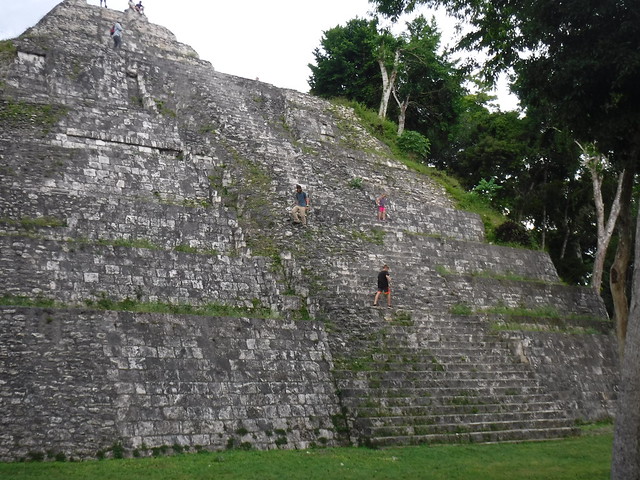
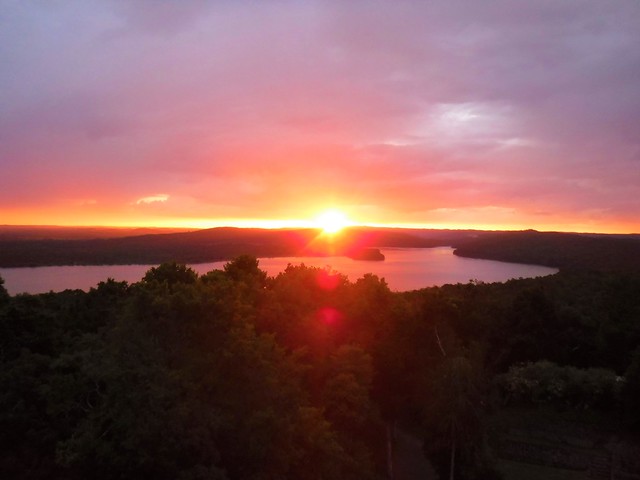




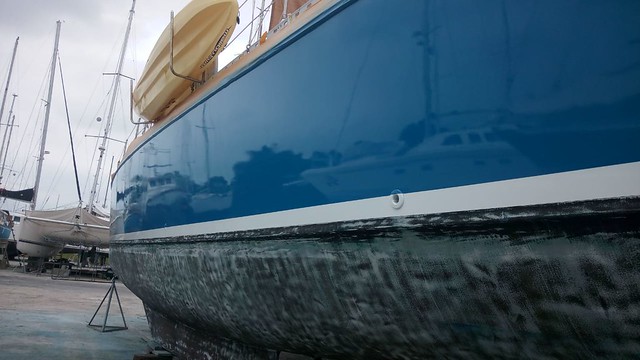
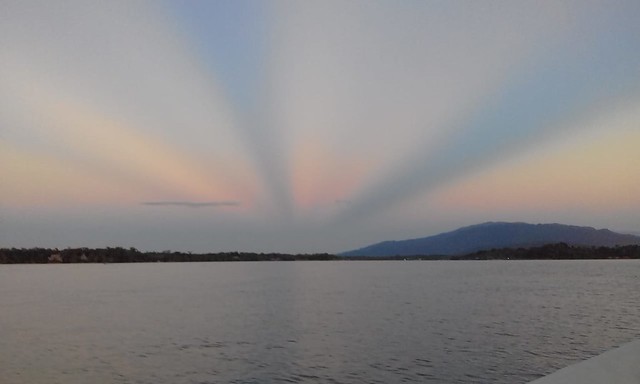






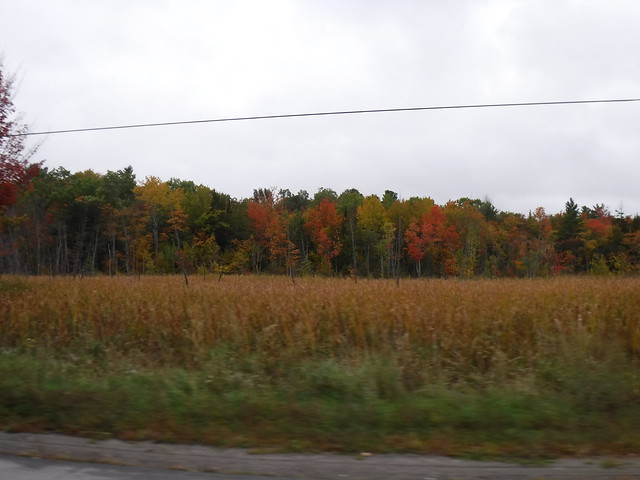

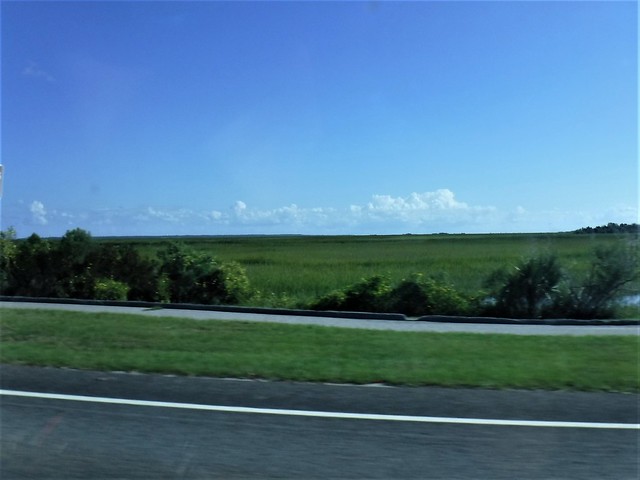



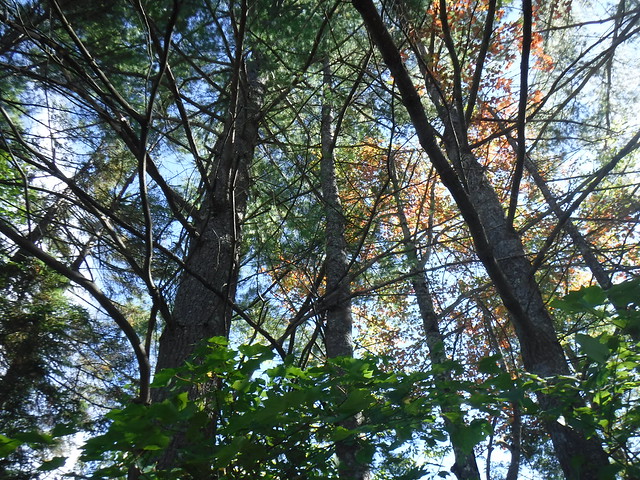
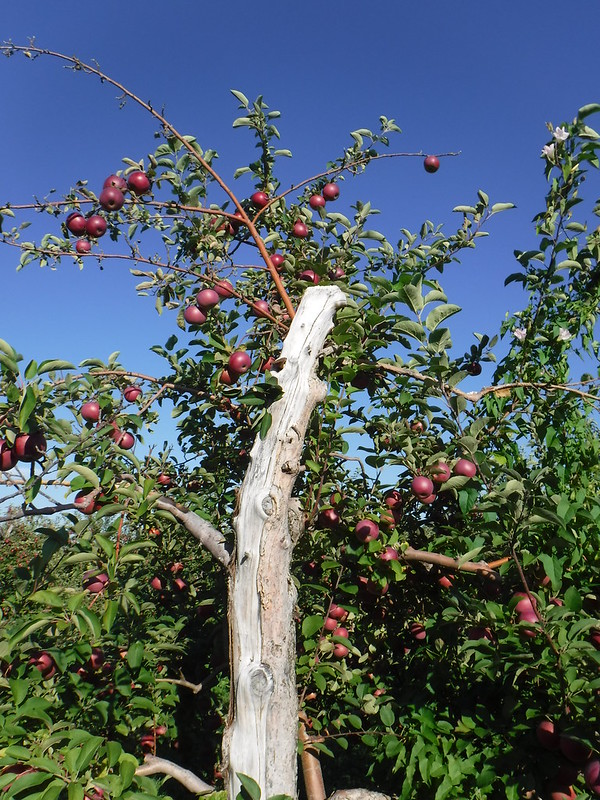

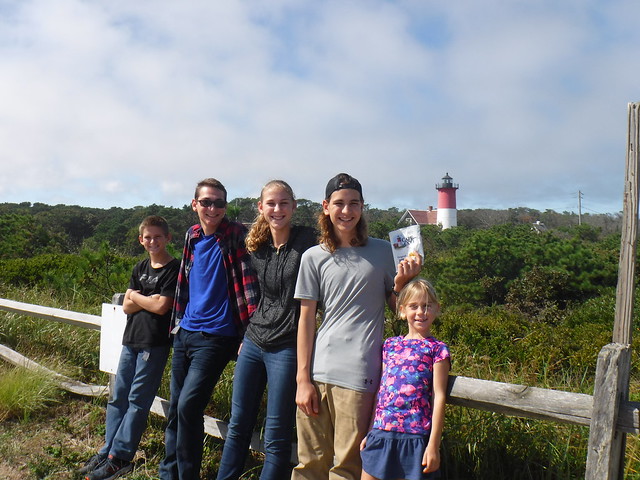

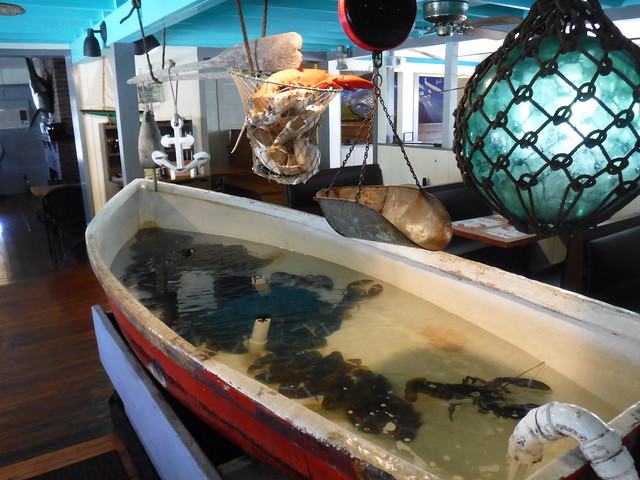
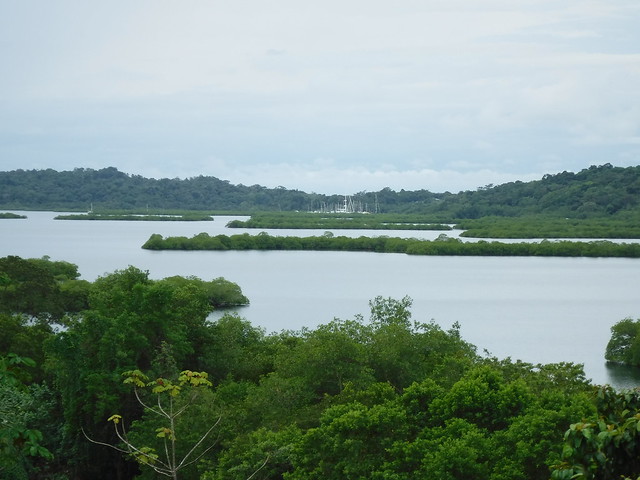


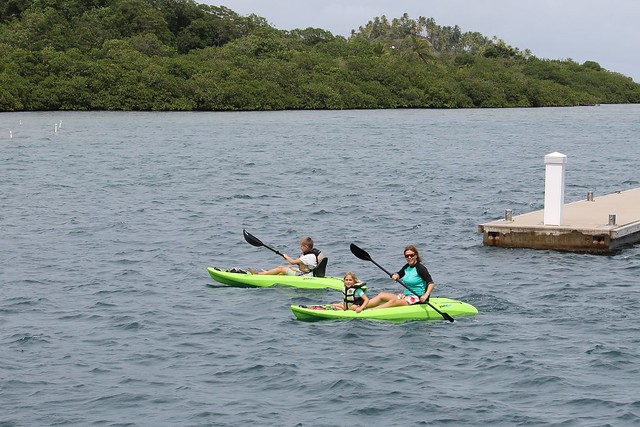

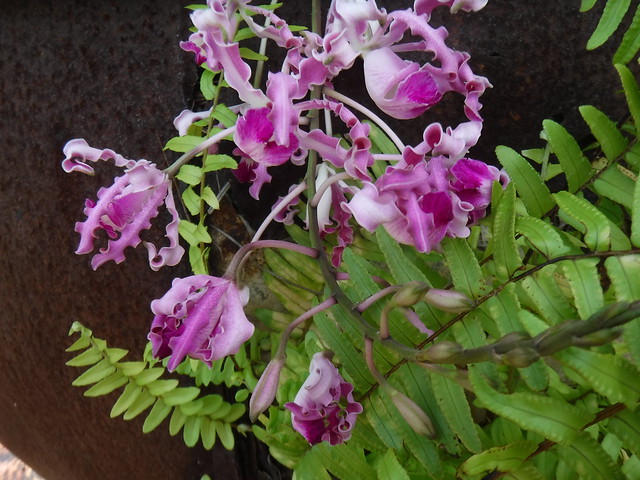


![Baby Bananas]](https://farm2.staticflickr.com/1750/41940765025_03e8a50f46_c.jpg)

